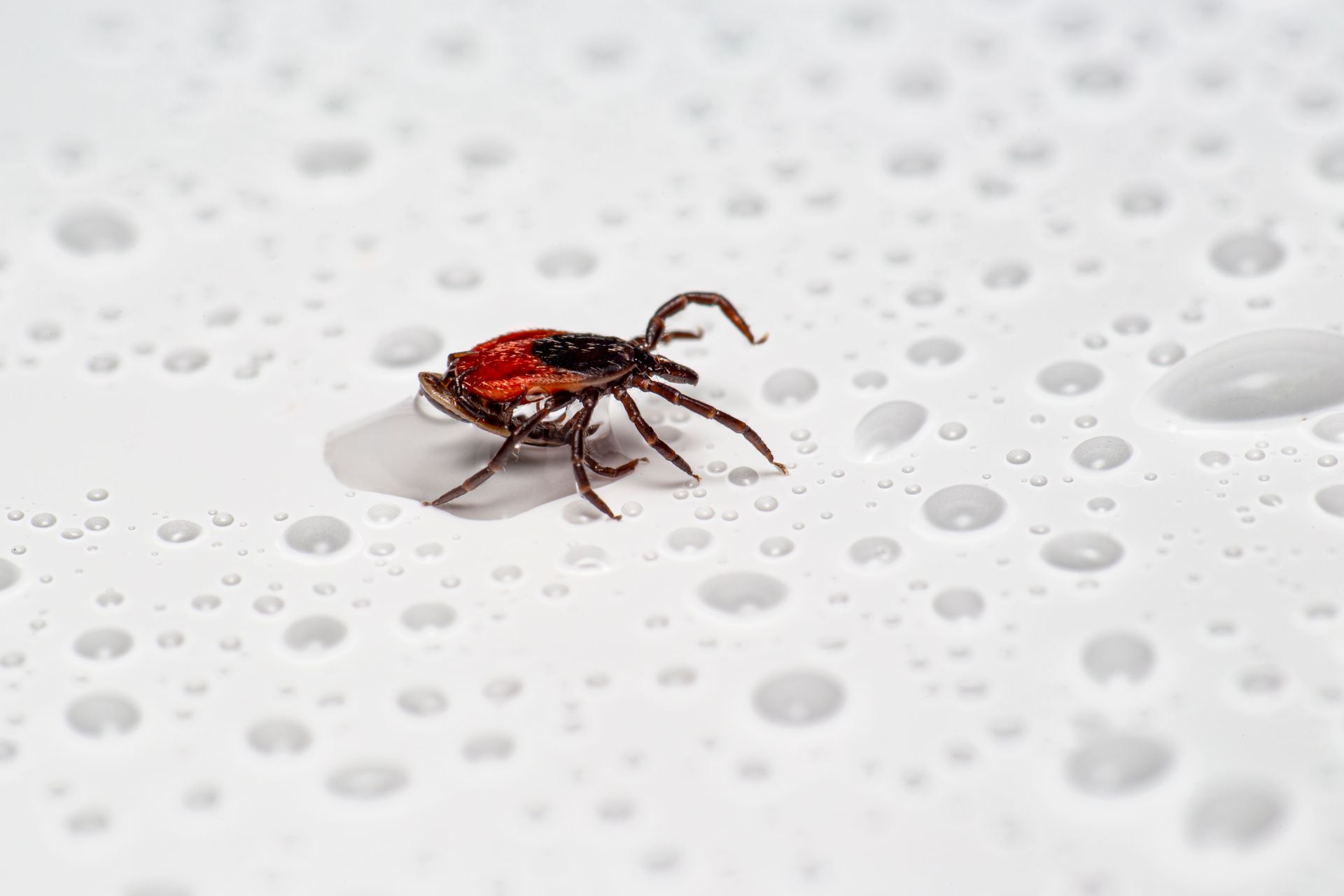Sudzee School
Lets Talk Fleas & Ticks : How To Safeguard Your Furchild

As pet owners, we cherish the companionship and love our furry friends provide us. Keeping them safe and healthy is a top priority. When it comes to the well-being of our pets, safeguarding them from fleas and ticks should be a key concern. These tiny parasites may seem harmless, but they can pose significant risks to the health of our beloved animals. In this blog, we'll explore the importance of protecting your pet from fleas and ticks and discuss effective prevention strategies.
Preventing Discomfort and Irritation:
Fleas and ticks are notorious for causing discomfort to our pets. Flea bites can lead to intense itching, skin irritations, and allergic reactions. Ticks, on the other hand, can attach themselves to the skin, feeding on the pet's blood and potentially transmitting diseases. By safeguarding your pet from these parasites, you can prevent the itching, scratching, and discomfort that can make your furry friend miserable.
Disease Prevention:
Fleas and ticks are not just annoying; they can also transmit dangerous diseases to our pets. Fleas can transmit parasites like tapeworms and cause conditions such as flea allergy dermatitis. Ticks are capable of transmitting diseases like Lyme disease, Rocky Mountain spotted fever, ehrlichiosis, and more. Protecting your pet from fleas and ticks significantly reduces the risk of these diseases, keeping them healthier and happier.
Protecting the Family:
Fleas and ticks don't just pose a threat to our pets; they can also affect human health. These parasites can easily find their way into our homes, making humans susceptible to their bites as well. Fleas can cause itchy bites and allergic reactions in people, while ticks can transmit diseases such as Lyme disease to humans too. By safeguarding your pet from fleas and ticks, you are also protecting your family from potential health risks.
Long-Term Cost Savings:
Preventing a flea or tick infestation is not only beneficial for your pet's health but also for your wallet. Treating an infestation can be a time-consuming and expensive process. It often requires not only treating the pet but also addressing the environment, such as your home and yard. By investing in preventive measures, such as regular use of flea and tick preventatives, you can save yourself from the hassle and cost of treating an infestation later on.
Peace of Mind:
Knowing that your pet is protected from fleas and ticks can provide you with peace of mind. You can enjoy outdoor activities with your pet without constantly worrying about them picking up parasites. By taking proactive steps to safeguard your pet, you can focus on creating cherished memories and building a strong bond with your furry companion.
Prevention Strategies:
- Use Flea and Tick Preventatives:
- Consult with your veterinarian to choose the most suitable flea and tick preventatives for your pet. These can include topical treatments, collars, oral medications, or spot-on treatments. Follow the instructions carefully, considering factors like your pet's age, weight, and species. Regularly apply or administer the preventive treatments as directed.
- Regular Grooming and Inspection:
- Maintain a consistent grooming routine for your pet, including regular brushing and checking for any signs of fleas or ticks. Comb your pet's fur with a flea comb, paying close attention to areas where these parasites often hide, such as the neck, tail, and ears. Promptly remove any fleas or ticks you find.
- Clean and Vacuum Your Home:
- Regularly clean and vacuum your home, paying attention to areas where your pet spends most of their time. Wash your pet's bedding frequently and keep the living environment tidy. This helps eliminate any fleas or ticks that may have entered your home.
- Environmental Control:
- Make your yard less hospitable to fleas and ticks by maintaining a well-trimmed lawn, removing debris, and creating a barrier to prevent wildlife from entering your property. Consider using environmentally friendly insecticides or seeking professional pest control services for effective outdoor parasite control.
Safeguarding your pet from fleas and ticks is an essential part of responsible pet ownership. By taking preventive measures, you can protect your pet from discomfort, diseases, and potential health risks. Regular use of flea and tick preventatives, coupled with proper grooming and environmental control, can ensure a safer and healthier life for your beloved pet. Remember, prevention is key in preserving your pet's well-being and fostering a strong bond between you and your furry companion.
Below are some examples of medications:
Topical Spot-On Treatments:
- Frontline Plus: Contains fipronil and (S)-methoprene, effective against fleas and ticks.
- Advantage II: Contains imidacloprid and pyriproxyfen, kills fleas and prevents re-infestation.
- K9 Advantix II: Contains imidacloprid, permethrin, and pyriproxyfen, repels and kills fleas, ticks, and mosquitoes.
- Revolution: Contains selamectin, provides protection against fleas, ticks, heartworms, and other parasites.
Oral Medications:
- Bravecto: Contains fluralaner, offers long-lasting protection against fleas and ticks for up to 12 weeks.
- NexGard: Contains afoxolaner, kills fleas and ticks and is available as a tasty chewable treat.
- Simparica: Contains sarolaner, provides monthly protection against fleas and ticks.
- Sentinel Spectrum: Contains milbemycin oxime and lufenuron, protects against fleas, ticks, heartworms, and intestinal parasites.
Flea and Tick Collars:
- Seresto: Contains imidacloprid and flumethrin, provides long-term protection against fleas and ticks for up to 8 months.
- Scalibor: Contains deltamethrin, repels and kills fleas, ticks, and sand flies for up to 6 months.
*It's important to note that these examples are for reference purposes only, and it's crucial to consult with a veterinarian to determine the most suitable flea and tick medication for your specific pet's needs, based on their health, species, and other factors. Veterinarians can provide guidance on proper dosage, application, and any potential side effects or interactions to ensure the safety and efficacy of the chosen medication.*
Below are some examples of Hollistic treatments:
- Essential Oils:Cedarwood oil: Known for its repellent properties against fleas and ticks.
- Lavender oil: Often used to repel and soothe insect bites.
- Lemongrass oil: Has natural insect-repellent properties and can be used in sprays or diluted in carrier oils for application.
- Peppermint oil: Known for its strong scent that repels fleas and ticks.
Note: When using essential oils, it's important to dilute them properly and use them in moderation as some pets may be sensitive to certain oils. Always consult with a veterinarian before using essential oils on your pet.
Herbal Sprays and Shampoos:
- Neem oil: Derived from the neem tree, neem oil is known for its natural insecticidal properties and can be used as an ingredient in sprays or shampoos.
- Rosemary: This herb is believed to repel fleas and can be used in natural flea sprays or added to pet shampoos.
- Citrus: Lemon, orange, or grapefruit extracts are sometimes used in natural sprays or rinses as they are believed to repel fleas and ticks.
Diatomaceous Earth (DE):
- Food-grade diatomaceous earth is a fine powder made from the fossilized remains of tiny aquatic organisms. It can be sprinkled on carpets, bedding, and outdoor areas to dehydrate and kill fleas and ticks.
Flea Combs:
- Regularly combing your pet with a fine-toothed flea comb can help physically remove fleas and ticks from their fur. It's a non-toxic and natural method of controlling infestations.
Preventative Measures:
- Maintaining a clean living environment by regularly washing bedding, vacuuming carpets and furniture, and keeping outdoor areas well-maintained can help reduce flea and tick populations.
*Please note that while these holistic options are considered natural alternatives, their efficacy may vary, and it's important to consult with a veterinarian before using any of these products. Additionally, holistic treatments may not offer the same level of protection as conventional medications in high-risk areas or severe infestations. It's crucial to assess the specific needs of your pet and consider professional advice when determining the most appropriate approach for flea and tick prevention.*
The Pet Parents guide






